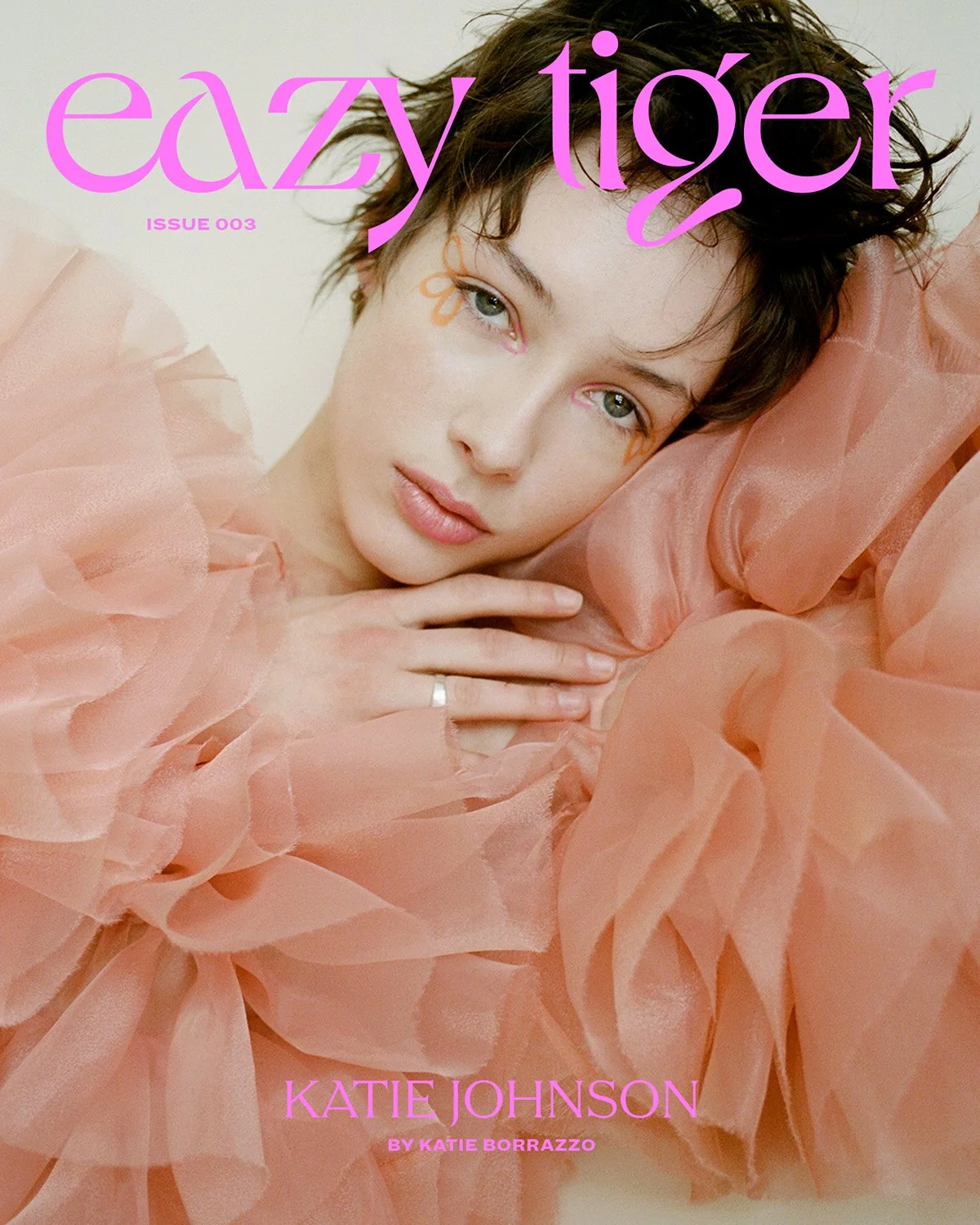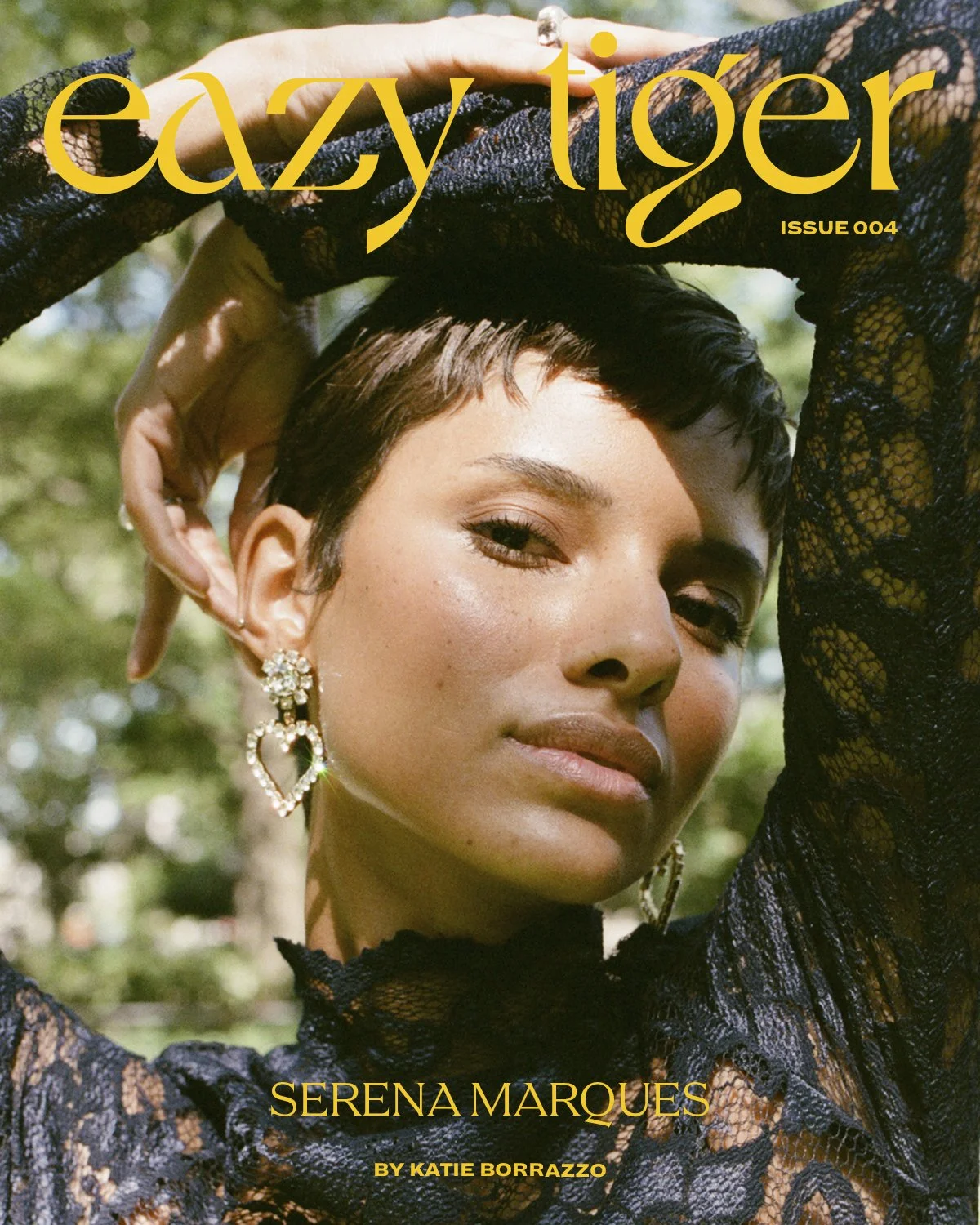Katie Borrazzo - Fashion Photographer
“That’s so Tumblr” turned pro fashion photographer. Borrazzo’s work is a testament to carving out a career with an aesthetic first approach - and I love to see it. We chat cameras, career & creativity.
When did you get your first camera?
As a kid, I had a few digital point and shoots – lots of blurry photos from my trusted Nikon Coolpix and a few others over the years! I was in high school during the time when the highest form of compliment for a photo was “That’s so Tumblr.” I got my first DSLR later in highschool, and then started experimenting with film cameras over the next few years.
How would you define your aesthetic?
I’m focused on editorial fashion photography. Though I shoot hybrid between film and digital, I prefer to only show my film work, as I love how it captures color, light, shadow, and dimensionality. To me, fashion photography is a lens through which to see the world, and a way to observe the interaction between people, their attire, and their surroundings, and of creating moments as much as just noticing and documenting them. Through my work, I seek to question which elements locate an image in the realm of fashion and to elevate the ordinary through the art of fashion.
Your fashion work is so rich and clean, how do you achieve this?
Thank you! Whether working on location or in-studio, I am drawn to natural light in creating imagery, and shooting on color film – I could never really get into black and white – has played a large role in helping me progress toward the kind of visual aesthetic for which I am aiming – dreamy and bright. Autofocus and great development and scanning also help!
How has your work evolved over time?
When I first became interested in photography, I had a very “Instagram-y” aesthetic – lots of shallow depth-of-field, saturated colors, and so forth. Over time, I gravitated away from that and toward an editing style inspired by film, and then started to incorporate more and more film into each of my shoots. In editorial, there’s a duality between wanting the clothing to look good, but also challenging oneself to come up with unique compositions. A final published selection might only include 7-15 images, so it’s important to balance variation with cohesion. I love photographing on location because of the endless possibilities for a setting, and how background elements interact with and highlight the clothing and model’s posing and look.
What is your current go to techniques and/or technology?
I use a Canon Elan 7 with a 40mm lens for most of my film work – nothing fancy, but I really love that it has autofocus and a number of different shooting modes! (It looks just like a digital camera from the outside!) I get my film developed and scanned at @phtsdr – definitely recommend it if you're ever in NYC (or if you want to mail your film there)!
WOTW TIP: Getting into film photography? An affordable way to start, we recommend a half frame camera with some Kodak Gold.
How do you prepare for a shoot day?
I usually start by creating a moodboard inspired by the latest season’s runway collections. I’ve found it’s important to be on-trend as it helps stylists secure clothing for the shoot.
Once the team is confirmed, I review my reference photo collection and pick out ones that I think fit the vibe of the shoot in terms of poses or different aesthetics I am hoping to achieve, and then AirDrop them to myself so I can reference them during the shoot. I look at the model’s portfolio and at the other team members’ – as well as previous shoots which the magazine has published, or the brand’s site. When shooting for a client, I have a shotlist prepared; if it’s an editorial, I tend to take a more organic approach.
Lastly, from a logistical perspective, I have a list of equipment prepared – things like charged batteries, extra batteries and memory cards, a reflector, film, and snacks for the team. And I always make sure to know how long it’s going to take to get to location!
What was your favorite shoot to date?
I’m really proud of editorials that I did for Eazy Tiger Magazine (Digital Cover Story), Contributor Magazine, and Design Scene. It’s hard to pick because I feel like there are singular images from many of the shoots that I have done that I really like, but it’s hard for me to feel happy with every image from a shoot. It’s really interesting and encouraging to see images from years ago that I still really like.
How do you balance creating personal & client work?
I work full-time in nonprofit communications, so for photography, I focus more on meaningful personal projects. I’m hoping to be able to take on more client work though – I do fashion shoots for independent designers, as well as portraits and events. I’ve long followed the guideline of creating the kind of work you hope to be hired for. I’m excited to see where the next year takes me, and want to thank all the amazing collaborators and clients I have worked with thus far!
Follow the artist @katieborrazzo
Join the community @waitingontheworld








